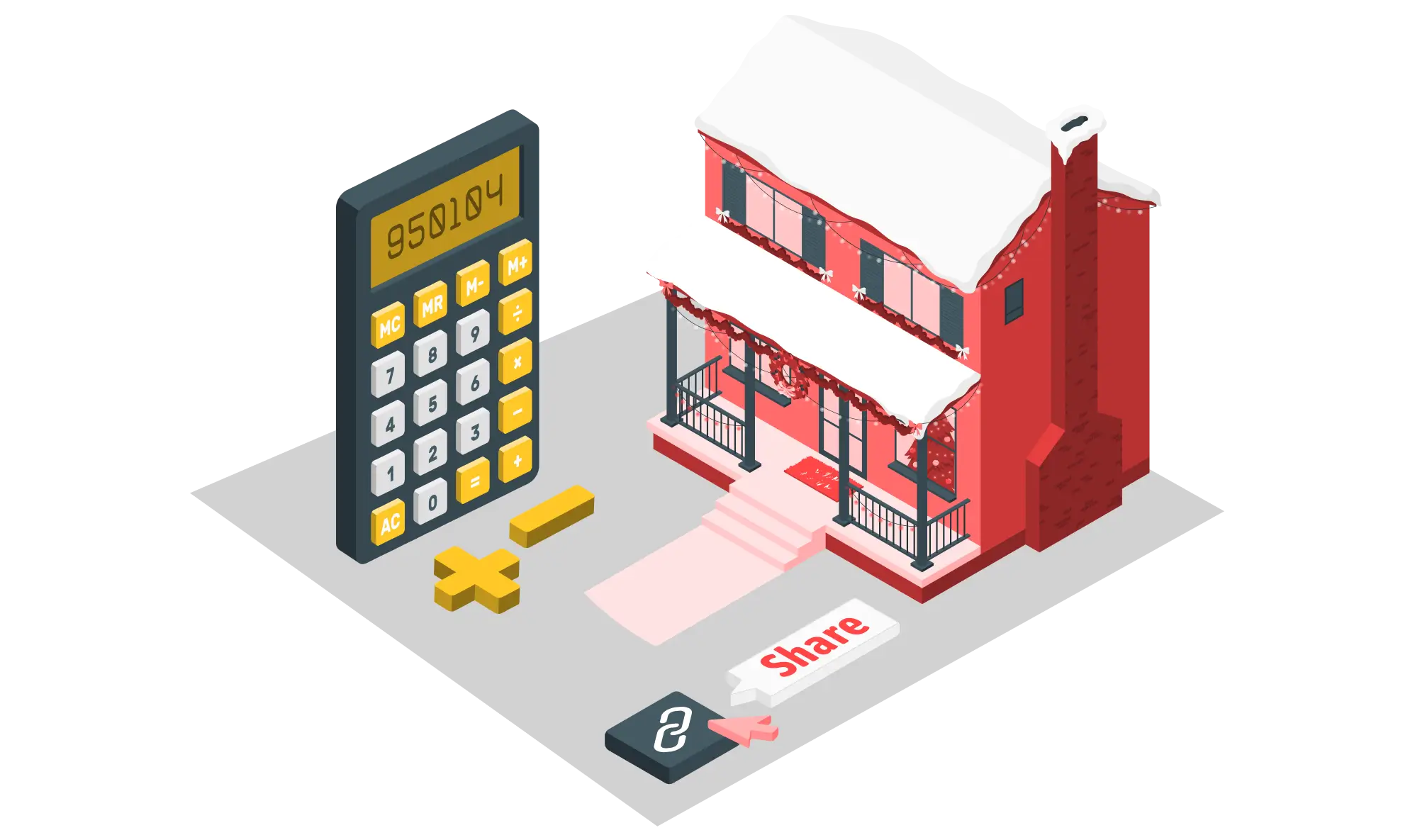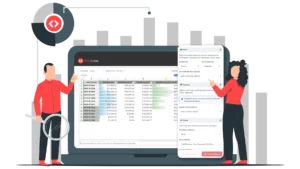Updated: June 27, 2024
Vacation rental owners depend on property managers to provide accurate revenue estimates. This builds trust, showcases expertise, attracts new clients, and sets realistic expectations. Multiple factors affect vacation rental revenue estimates, such as location, amenities, seasonality, property type, etc. Using tools like Revenue Estimator Pro, managers can offer detailed, data-driven insights that make everyone feel confident and informed.
When vacation rental owners decide to list their property, the burning question is always, ‘What can I earn?’ This is no different when they’re vetting property managers. As a savvy manager, knowing how to calculate rental income and painting a vivid picture of profit potential for your clients is of the utmost importance.
Unlocking a vacation rental property’s potential begins with understanding its financial landscape. This blog delves into the art and science of calculating vacation rental estimates and how to provide owners with invaluable insights that can transform their property into a lucrative investment.
Why Should Property Managers Share Revenue Estimates With Owners?
It is important to calculate rental income and share revenue estimates with owners. This helps property managers establish robust and transparent relationships with their existing vacation rental owners. It also helps them get new property management leads and onboard new owners to their property management business.


- Builds Trust and Transparency: Sharing detailed revenue estimates fosters trust and transparency with existing owners and new leads, ensuring they feel informed and confident in the management of their properties.
For example, a property manager might regularly provide detailed reports showing actual versus projected earnings and explain market trends and how they affect revenue. This transparency helps owners understand the reasoning behind decisions and builds a strong working relationship based on mutual understanding.
- Demonstrates Expertise: Providing accurate, data-driven insights showcases the property manager’s expertise. It reassures current owners and attracts new leads that their property is in good, knowledgeable hands.
- Attracts New Clients: A property manager could use revenue estimates to show a potential client how their property could perform as a vacation rental. This data-driven approach convinces the owner of the potential financial benefits and encourages them to enlist the manager’s services.
- Sets Realistic Expectations: Detailed estimates help set realistic expectations about potential earnings and market conditions, building long-term relationships based on achievable goals.
For instance, a property manager might use revenue estimates to educate owners about seasonal fluctuations in rental demand and how these affect income. By preparing owners for both high and low seasons, the manager helps them plan and budget effectively.
Bonus Read: How can a property manager talk to owners about using Dynamic Pricing?
Factors Affecting Revenue Estimates
Several factors significantly influence vacation rental revenue estimates:
- Location: The geographic area where the property is situated plays a crucial role. Popular tourist destinations or areas with high demand for short-term rentals typically command higher rates and occupancy levels.
- Seasonality: Peak tourist seasons versus off-peak periods heavily impact rental rates and occupancy rates. Understanding vacation rental seasonality helps forecast revenue accurately.
- Property Type and Size: The type of property (e.g., condo, house, villa) and its size (number of bedrooms, bathrooms) directly affect rental rates and appeal to different traveler demographics.
- Amenities and Features: Properties with desirable amenities such as a pool, beach access, or proximity to attractions tend to attract more guests and command higher rental prices.
- Market Conditions: Factors like local events, economic trends, and competition from other vacation rentals and hotels in the area can influence demand and pricing strategies.
- Marketing and Listing Quality: Effective marketing strategies, high-quality listing photos, and compelling property descriptions can attract more bookings and justify higher rates.
- Regulatory Environment: Local laws and regulations regarding vacation rentals, such as occupancy limits or tax requirements, can impact operational costs and revenue potential.
How to Use Revenue Estimator Pro to Calculate Rental Income Estimates
Estimating the potential revenue of a vacation rental property is crucial for property managers and investors.
Revenue Estimator Pro uses historical data of the past 1 year from Airbnb listings to provide instant and detailed revenue estimates for any property address worldwide. For example, if you created the estimate on April 5th, 2024, then we consider data for April 3, 2023, to April 3, 2024, to create the estimate. Upon entering an address, the tool gathers data on similar nearby properties, including their nightly rates, occupancy rates, and seasonal trends. You can also select the listings in the tool similar to your listing to gain more accurate estimates.
It then uses this data to generate comprehensive monthly and annual earnings projections, average daily rates (ADR), and occupancy estimates. The tool also allows for customizing comparable properties based on various criteria, such as review scores, amenities, and specific geographic zones.
Here’s a step-by-step guide on how to use Revenue Estimator Pro to draw revenue estimates.
Step 1: Create a PriceLabs Account
If you don’t already have a PriceLabs account, start by creating one using the PriceLabs website. Just click “Start Your Free Trial” or “Sign Up” and follow the registration steps to set up your account.
Step 2: Access Revenue Estimator Pro
For existing PriceLabs users:
- Log in to your PriceLabs account and navigate to the “Market Research” tab. Now, select “Revenue Estimator Pro” from the dropdown menu.
For new users:
After creating your account, go to the “Market Research” tab. Find “Revenue Estimator Pro” listed as the second option.
Step 3: Enter the Property Address
In the Revenue Estimator Pro tool, enter the property address you want to estimate, bedroom count, and chosen currency. Then click “Search” to initiate the estimation process.


Step 4: Review Initial Estimate
The tool will generate an initial estimate, providing key metrics such as:
- Monthly and annual revenue projections
- Average Daily Rates (ADR)
- Occupancy rates


Review the initial data to get a baseline understanding of the property’s earning potential.
Step 5: Customize Comparables
Click “Filter & Refine CompSet” in the estimate dashboard to customize your comparables and calculate rental income accurately. You can modify comparison sets based on the following:
- Property performance filtering (e.g., review scores)
- Property Features (e.g., bedroom count, amenities)
- Specific geographic zones (using map-based area selection)


Adjust these filters to ensure the estimates closely match the unique characteristics of your property.
Step 6: Analyze Detailed Metrics
Examine the detailed metrics provided by the tool, including:
- Seasonal trends affecting revenue
- Revenue and occupancy trends based on market data.
- Breakdown of monthly and annual earnings projections
Use these insights to understand how different factors influence potential revenue.
Step 7: Save and Manage Estimates
These estimates can be referred back to and saved under the “Revenue Estimator Pro” section. This section is a dashboard to view all the estimates you have ever created. You can access or refresh this dashboard at any time.
Step 8: Export and Share Estimates
You can easily share these estimates with property owners to show them what to expect and generate more property management leads. Using the export feature, you can download these estimates as PDF or CSV files in the estimate dashboard. You can customize the PDFs with your logo for a more professional touch.


Tips To Calculate Rental Income
- Regular Updates: Regularly update your estimates to reflect changes in the market.
- Seasonal Adjustments: Consider seasonal variations in occupancy and rates to get more accurate projections.
- Local Comparisons: Always compare your property with similar local listings to understand competitive positioning.\
Conclusion
Accurately calculating and sharing vacation rental income estimates is crucial for property managers who aim to build trust, demonstrate expertise, attract new clients, and set realistic expectations for property owners. Tools like Revenue Estimator Pro from PriceLabs can significantly streamline this process, providing precise, data-driven insights into a property’s potential earnings. By following the steps outlined, property managers can generate comprehensive revenue estimates that inform and educate property owners and highlight the manager’s proficiency and dedication to maximizing the property’s profitability.








